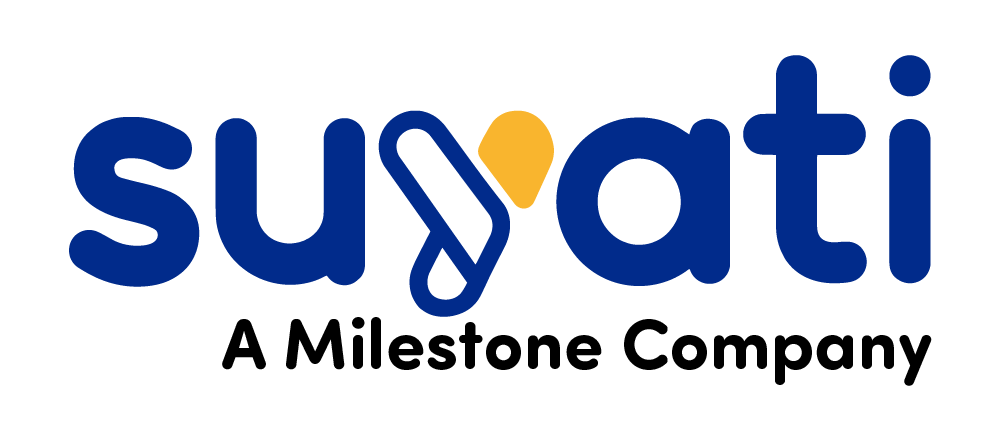The annual enhancements to Microsoft Dynamics 365 are here. True to form, the 2020 release wave 1 lists a host of new features and innovations. Microsoft will install these updates automatically, from April 2020 through September 2020. Here are the major improvements:
Transitioning to the Unified Interface
Microsoft is switching off the legacy web client of Dynamics 365 in October 2020. All Microsoft Dynamics 365 online environments will transition to the new Unified Interface. The United interface adopts responsive web design principles to deliver optimal viewing experiences.
Microsoft is auto-transitioning websites to the new UI, and expects to complete the process by the end of March 2020. Site admins have a priority to make their sites ready for the new Unified Interface. An extension of the deadline seems unlikely.
New Power Apps and Power Virtual Agents
Side-by-side with the Unified Interface, Microsoft is introducing the Power Apps Control Framework. Developers may leverage the framework to enhance user experience. They may create and embed new solutions, replace legacy pages, or power innovative solutions for their customers.
Many developers use virtual agents to develop chatbots. Microsoft’s Virtual Agents no-code user interface makes the task simple and easy. Subject experts may add the required features using the graphical interface, and roll out chatbots on their own. They no longer need to rely on programmers. The new 2020 release wave 1 will add conversational AI to the mix. The infusion will add more capabilities and improve delivery. It will work side-by-side with customer service Insights, to review trending cases. Service managers get a powerful tool to identify the topics best left to a bot.
These AI-powered chatbots are not the exclusive realm of Dynamics 365 though. Microsoft plans to deploy it in data service environments.
Improved Interface for Sales
Microsoft Dynamics 365 Sales Insights merges sales information in a single pane. It merges sales information from Dynamics 365, LinkedIn relationships and Office 365 communications. It offers a 360-degree view of customer engagements, with real-time actionable information. AI infuses the platform with agility, and offers the ability to adapt to rapid market changes.

The 2020 release wave 1 lists significant upgrades to the sales component. It proposes an improved interface, which will enable users to find, manage, and filter activities easily. Users may create, edit, complete, and delete activities without navigating from the main page. An easy drag-and-drop interface allows users to updates activities fast. The calendar view lists activities, offering clarity on daily to-do activities.
Improvements in Sales Forecasting
Microsoft Dynamics 365 Sales feeds customer information into product procurement and sales tracking. But effectiveness depends on opportunities that reflect customer interest. Towards this end, the new release wave adds new features to Sales Forecasting.
A major improvement listed in Microsoft Dynamics 365 2020 release wave 1 is in forecasts. Microsoft is all set to improve forecasts with precision pipeline management.
Forecasts paired with opportunities offer rich information to the salesperson. But such information often comes disjointed, delaying action. Sellers and sales managers often have a tough time identifying the source of forecast values and resolving gaps. The new forecasting capabilities combine forecast and opportunity data. They may change the information with the flow and view it real-time.
Another new feature allows users to look up products from the catalogue. They may explore product details inline and compare products, to make an informed selection. It is now also possible to add many products at one go.
Improvements in Marketing
Microsoft is focusing on improving personalisation and adaptability in the 2020 release wave 1. The new updates make the tool simple, improve adaptability, and enhance performance.
Microsoft Dynamics 365 Marketing enables rich personalization and automation. The latest release simplifies the user experience and improves workflows. It also offers a new mobile experience. The focus is to enhance productivity, speed up sales and get work done in one go.
Test-send emails
A major improvement is the ability to test-send email messages. Microsoft Dynamics 365 for Marketing allows marketers to create emails with personalised content. But email clients may render the emails differently. Going forward, marketers can test messages with dynamic content on a sample contact record, to pre-empt glitches. There are significant improvements in error checking.
Improved segment design and management
The 2020 release wave 1 gives Microsoft Dynamics 365 marketing improved segment design and management. The enhancement allows users to define dynamic segments quickly.
Several new features and capabilities across both static and dynamic segments are on the anvil.
Improvements in Customer Service
Improvement in Agent Productivity
Customer service agents need to find and share knowledge articles fast. The new release allows agents to access and use knowledge articles better. Agents may review knowledge articles on a separate screen, without breaking their flow. The knowledge search has an improved interface, simplifying scanning, reading, and action. It is also now possible to search the knowledge base outside the customer case context. All these improve agent productivity manifold.
Rich text notes and keyword search in the timeline
Timeline control allows the agent to view a customer’s history across cases, accounts, or contacts. Agents get a better understanding of customer history to deliver personalised service.
The enhancements in the 2020 release wave 1 include the ability to create rich text notes detailing the case. The user may format the note to improve readability and for emphasis.
Agents may filter keyword search to access matching records. Applying extra filters limit the display to the specific user or system records. The improved UX allows agents to identify closed and completed activities with ease.
Improvements in Field Service
Microsoft Dynamics 365 for Field Service gets several new features in the 2020 Wave 1 Release.
Artificial Intelligence enhance field management capabilities manifold. Microsoft Dynamics 365 for field service already co-opts AI. The suite now allows users to preview suggestions and IoT alerts given by the AI engine. Microsoft has invested in proactive service through Azure IoT. Other enhancements include
- time entries and inspections,
- improvements in resource scheduling and
- deeper alignment with Microsoft Dynamics 365 Supply Chain Management.
Artificial Intelligence Apps Go Mainstream
The AI-powered assistant for Sales Insights, released in the second half of 2019, is now in preview mode. The assistant aids sales professionals to plan their schedule and prepare for meetings. Several new features will come with the full-blown live mode, making it a powerful beast.

The Sales Assistant will also be available through Microsoft Teams. This shows the increasing synergy between Microsoft Dynamics 365 and Teams in 2020.
Market Insights, again in preview mode, will become generally available. Insights deliver emails notifications and topics of interests.
Enhancements to Microsoft Forms Pro
Microsoft Forms Pro, released in 2019, enable users to develop surveys. It is AI-enabled and comes with intuitive features such as point-and-click functionality. The tool allows even lay users to create, send, and analyse custom surveys. These surveys integrate into the enterprise workflows and business systems.
The Wave 1 Release infuses Forms Pro with survey templates customisable to suit specific needs. A new customer satisfaction insights dashboard integrates survey results with customer records. The tool notifies businesses of customers’ negative sentiments or detractor Net Promoter Scores.
Fine-tuned Project Service
Microsoft has made changes to Project, its popular project management software. The major change is Project Online moving to the common data service. This allows secure storage of data used by business applications.
Microsoft plans an integrated experience for Project Online and Microsoft Dynamics 365. The modules chosen for offering the integrated experience are Service Automation and Finance. The integrated experience goes beyond improving customer satisfaction. It improves collaboration among team members working on leads and opportunities. Creating and assigning new tasks, and completing it, become a simple process.
Launch of Industry accelerators
The 2020 release wave 1 adds industry accelerators to Microsoft Dynamics 365 as a separate section.
The 2020 release wave 1 packs in the following industry accelerators:
Non-profit accelerator:
The non-profit accelerator aims to develop solutions for non-profit businesses. Examples include awards, fundraising, impact tracking, and program delivery.
Financial services accelerator:
The accelerator for financial services will develop solutions to enhance customer experience, using attributes such as banks, branches, loans, referrals, limits, and more.
Health accelerator:
The health accelerator aims to create new use cases and workflows. The accelerator uses entities focused on enhanced care coordination. It comes with the ability to segment patients and providers based on Electronic Medical Record (EMR) data.
Automotive accelerator:
The automotive accelerator seeks solutions based on entities and attributes commonly used by dealerships and OEMs. Examples include sales contracts, customer-vehicle relationship, warranties, test drives, and after-sales management.
A new Customer Data Platform on the horizon
Data has proliferated across business ecosystems. There is a pressing need for a unified customer profile co-opting data collected from all touch points. Microsoft is now on the cusp of launching such a Customer Data Platform.
The AI-powered Customer Service Insights unify disparate data types.
Microsoft Dynamics 365 Customer Insights unify data from transactional, observational, and behavioural sources. It offers a comprehensive view of data across silos. The single view of customers delivers intelligent insights for sales and marketing teams.
Find out More: How to create great customer experience with MS Dynamics 365
Click Dimensions’ intelligent dashboard, in preview mode, offers a host of sales and marketing options. This ready to use platform tracks 150+ best-practice KPIs across channels. It offers a single view of data, with clear insights on the activities driving results.
Click Dimensions is positioning its intelligent dashboard as a complete marketing cloud for D365.
Changes to Team Member Licensing
Microsoft is unifying Team Member licensing terms as part of the 2020 Wave 1 Release.
In October 2018, Microsoft had announced changes to the Microsoft Dynamics 365 Team Member licences. The new licenses imposed a limit of 15 custom entities for create, update and delete permissions. It also removed these permissions for the Accounts entity on a Team licence.
Team Member licences purchased before October 2018 was renewed on the previous licensing terms. This allowed customers unlimited custom entities and full Accounts usage rights.
But from July 2020, Team Member License users can no longer access Customer Service Hub, Sales Hub, or custom app modules. Renewal based on previous agreements will end and the latest terms will apply on renewals for all customers. The latest license-based access will restrict users to designated app modules. Users licensed with a Team Member SKU and updating Accounts, or using 15+ custom entities, will no longer have access to unentitled apps. They will need a full Microsoft Dynamics 365 enterprise app license. They could instead consider a Power Apps Plan as a cost-effective option.
A dedicated Team Member app or hub, to enforce licensing terms and capacities, could be on the anvil.
New On-Premise Version
The online and on-premise versions of Microsoft Dynamics 365 have been on different trajectories for many years now.
Microsoft announced a new on-premise version of Dynamics 365 during the October 2019 Power Platform Summit. The new release will hit the markets in the second half of 2020, two years after the v9 release. The on-premises edition will have “Customer Engagement” as its exclusive title.
Microsoft has not yet disclosed the list of new features or the iteration of the Unified Interface in the new on-premise version. But the critical functionality gaps which marred version 9 will be resolved. Most of the new functionality included in the online edition will also find its way to the on-premises version. On-premise administrators will be able to deploy the new UI in a production instance, something which they cannot do with the incumbent v9.
Administrators have already gained early access to the new features listed in the 2020 release wave 1. The updates will roll out automatically and become part of the Microsoft Dynamics 365 platform in April 2020. New features will release through September 2020.


